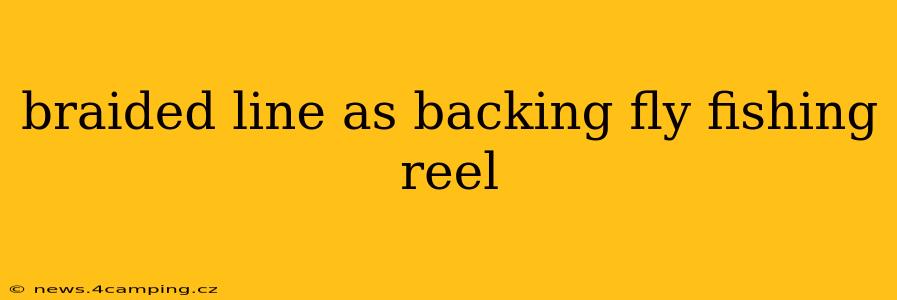Fly fishing relies on delicate presentation, and your reel's backing plays a crucial role in ensuring you're always prepared for a strong run. While monofilament has traditionally been the go-to choice for backing, braided line is increasingly popular. This guide explores the advantages and disadvantages of using braided line as backing for your fly fishing reel, helping you make an informed decision for your next fishing trip.
Why Use Braided Line as Backing?
Braided line offers several compelling advantages over traditional monofilament backing:
-
High Strength-to-Diameter Ratio: Braided lines are incredibly strong for their diameter. This means you can pack significantly more backing onto your reel, giving you a greater capacity for fighting large fish. This is particularly beneficial when targeting species known for powerful runs.
-
Reduced Bulk: The smaller diameter of braided line allows you to fit more backing onto your reel without adding significant bulk. This can be crucial for smaller reels where space is at a premium.
-
Improved Casting: While not directly impacting the fly line itself, a smaller diameter backing contributes to a smoother retrieve and potentially a more efficient cast, especially when dealing with very long casts.
-
Durability and Abrasion Resistance: Braided lines are generally more resistant to abrasion than monofilament, reducing the risk of damage from rocks or snags. This is particularly beneficial in challenging fishing environments.
What are the Disadvantages of Using Braided Line as Backing?
Despite its advantages, braided line also presents some drawbacks:
-
Knot Strength: Tying strong, reliable knots to braided line can be more challenging than with monofilament. Using appropriate knots (like the Alberto Knot) and practicing your knot-tying technique is essential.
-
Stretch: Braided line has virtually no stretch. This means that powerful fish runs are transmitted directly to your fly line and rod, potentially leading to broken tippets or even rod breakage if not managed carefully.
-
Potential for Digging In: The lack of stretch and the slick nature of some braided lines can cause them to dig into the spool, potentially leading to line slippage or difficulties in retrieving the line. Careful attention to spool filling and potential friction points is necessary.
-
Cost: Braided line backing can be more expensive per yard than monofilament backing. However, the increased capacity often offsets this cost.
Is Braided Line Right for All Fly Fishing Situations?
The suitability of braided line as backing depends on several factors:
-
Target Species: Braided line is particularly advantageous when targeting large, powerful fish requiring significant amounts of backing.
-
Reel Size and Type: Smaller reels benefit from the space-saving properties of braided line, while larger reels may not see as much of a difference.
-
Fishing Style: Anglers who frequently encounter snags or fish in abrasive environments may find braided line more durable.
-
Personal Preference: Some anglers simply prefer the feel and handling of monofilament backing.
How Much Braided Backing Should I Use?
The amount of backing required depends on your reel, the diameter of your fly line, and the type of fishing you're undertaking. A good rule of thumb is to fill approximately two-thirds of your reel's capacity with backing. This provides ample room for a strong run without overwhelming the spool. Always refer to your reel's manufacturer’s recommendations for optimal backing capacity.
What Knots Should I Use with Braided Backing?
Several knots are suitable for joining braided backing to fly line, including:
- Nail Knot: A classic and reliable knot.
- Bimini Twist: Creates a doubled line, enhancing strength.
- Alberto Knot: Specifically designed for braided lines and fly lines.
Proper knot tying is crucial. Practice these knots thoroughly before using them on the water.
What Type of Braided Line is Best for Fly Fishing Backing?
Look for braided lines specifically designed for backing. These lines are usually made of high-tenacity fibers, optimized for strength and durability.
In conclusion, braided line offers several advantages as fly fishing reel backing, particularly in terms of strength and capacity. However, it's crucial to understand its limitations, such as the lack of stretch and the need for careful knot tying. By carefully considering your target species, reel type, and fishing style, you can make an informed decision about whether braided line is the right choice for your next fly fishing adventure.
